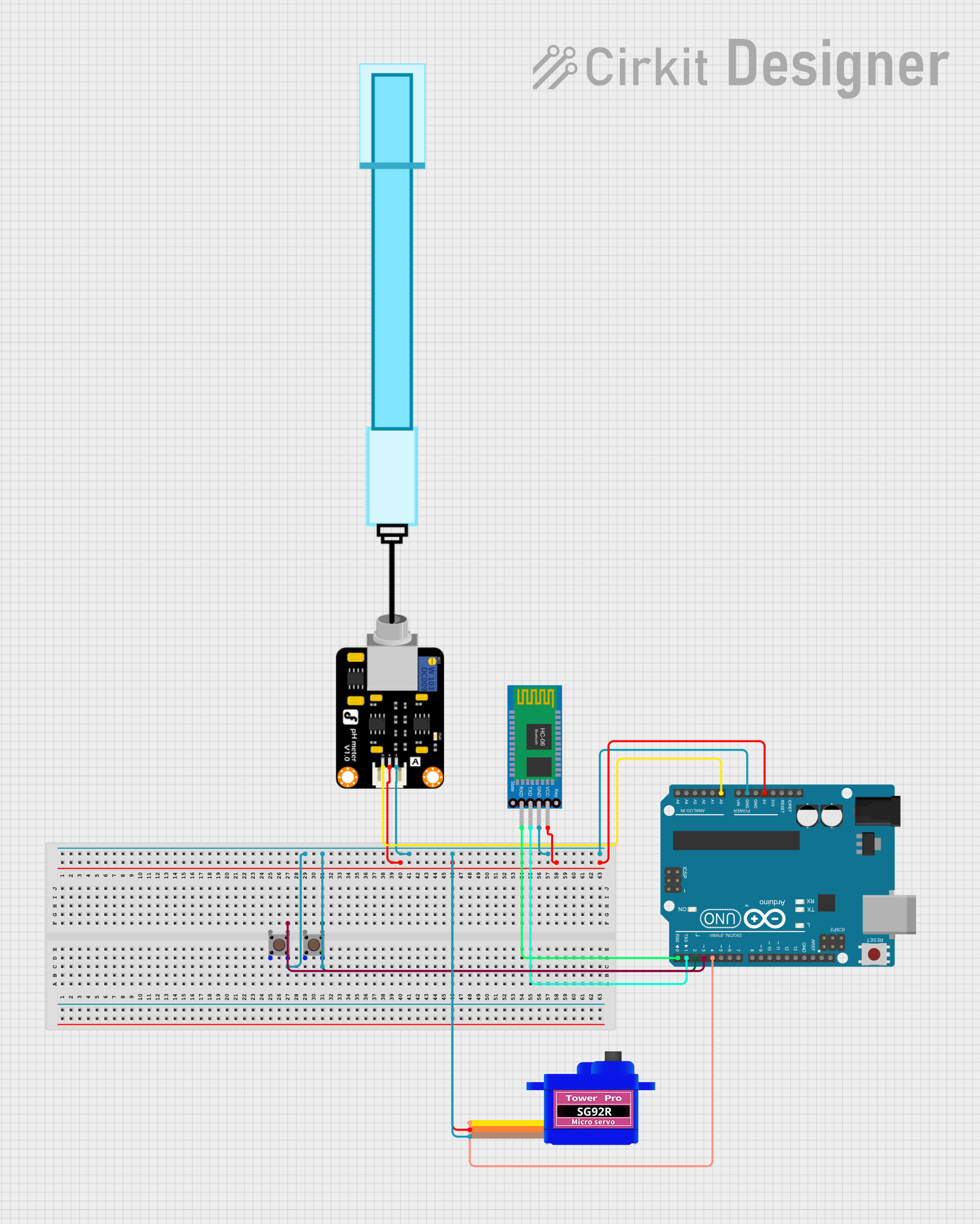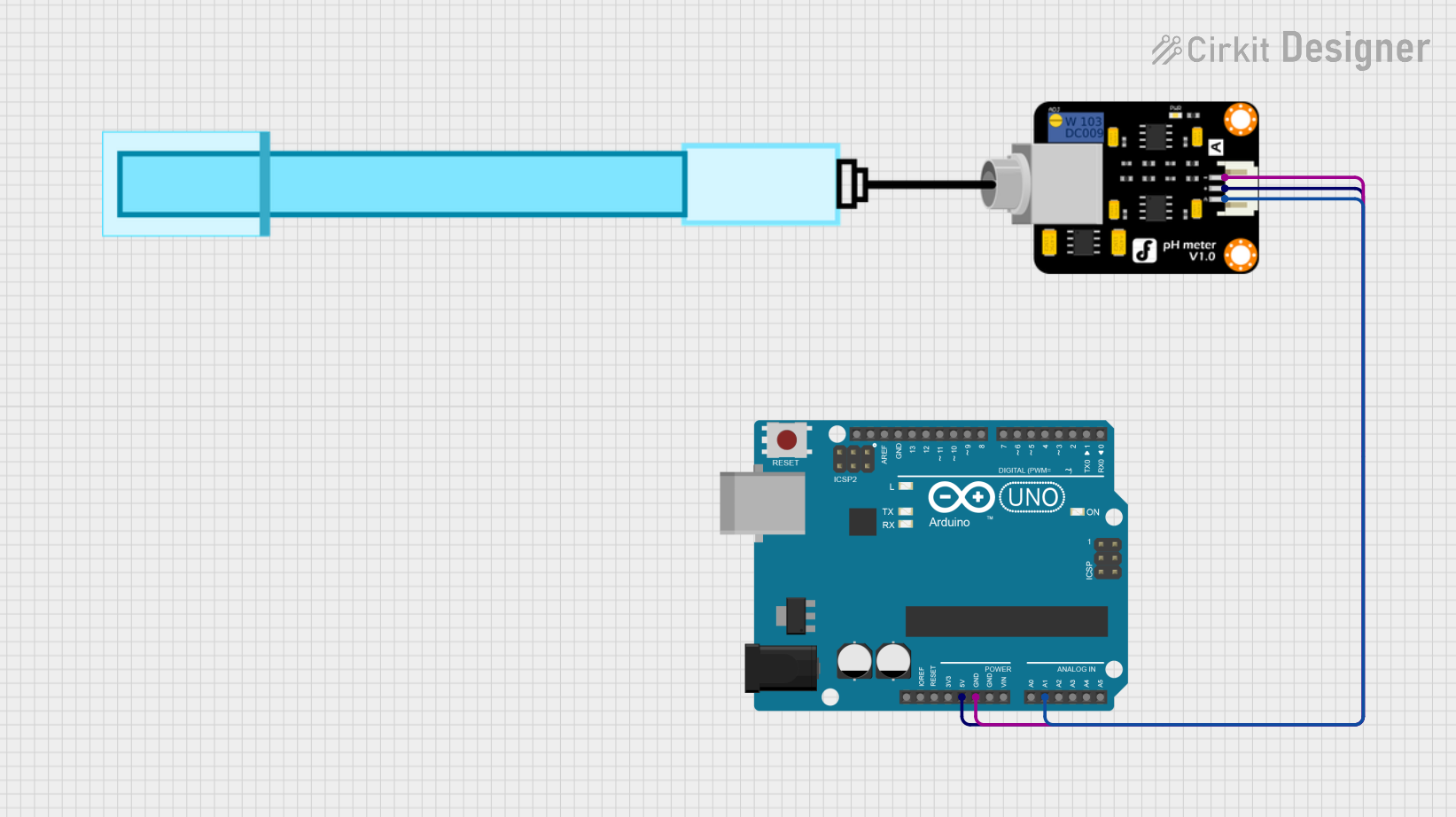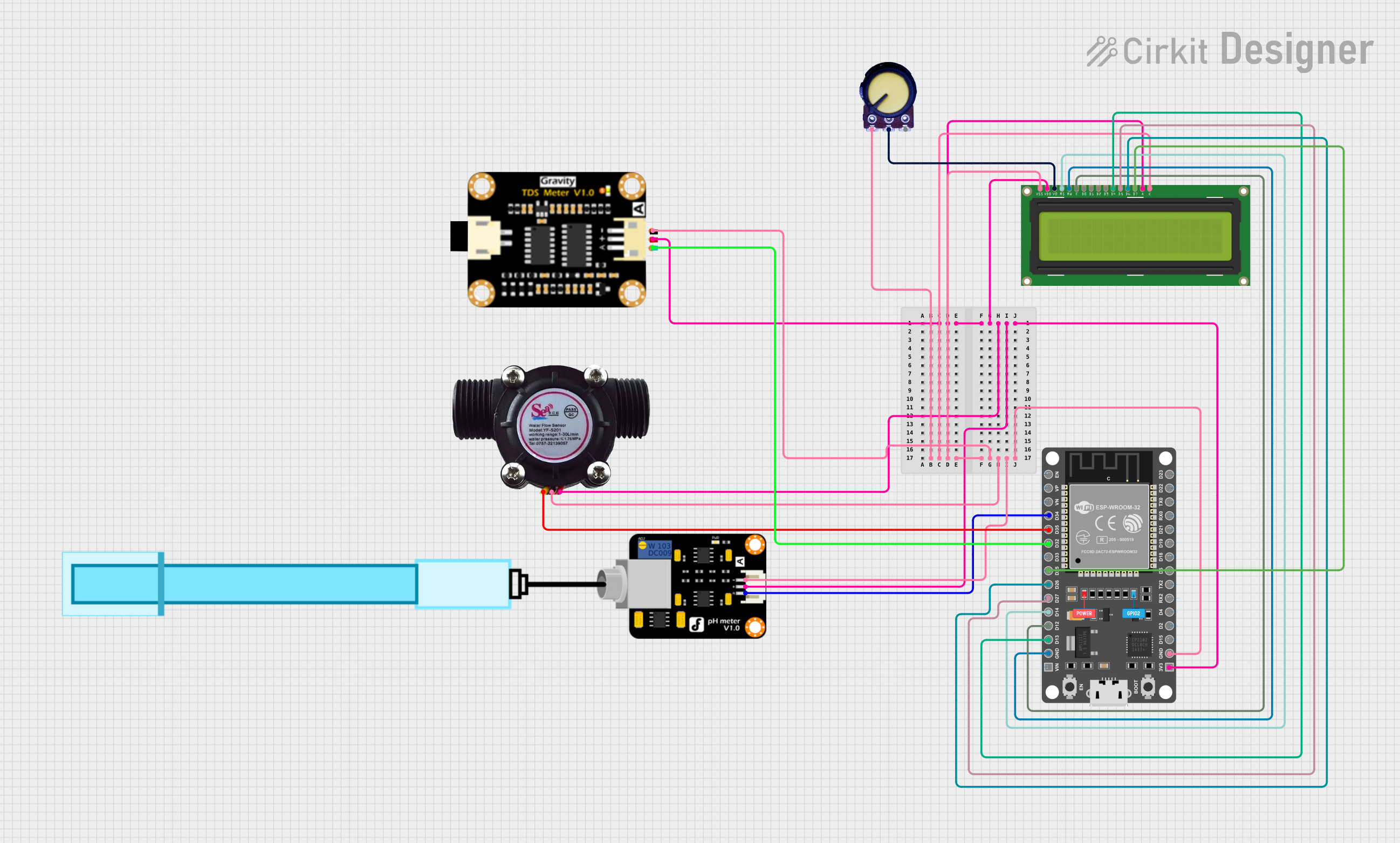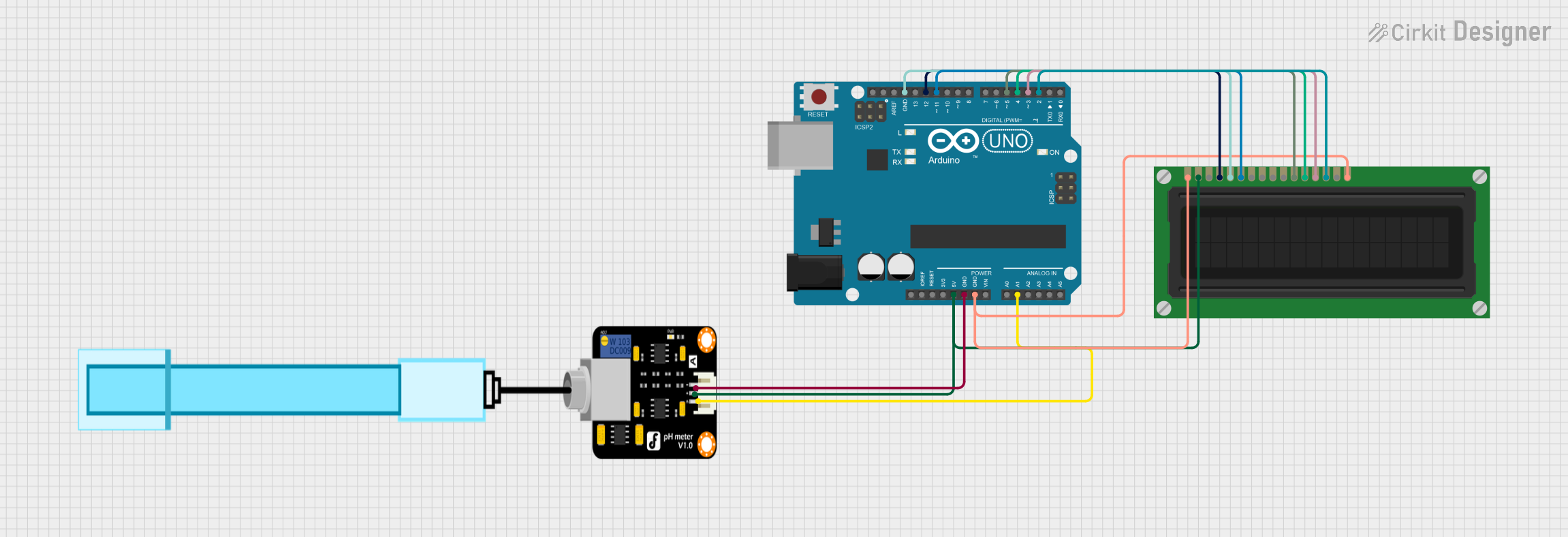
How to Use PH Meter: Examples, Pinouts, and Specs

 Design with PH Meter in Cirkit Designer
Design with PH Meter in Cirkit DesignerIntroduction
A pH meter is an electronic device used to measure the acidity or alkalinity of a liquid or solution, expressed as pH. The pH scale ranges from 0 to 14, with 7 being neutral, values below 7 indicating acidity, and values above 7 indicating alkalinity. pH meters are commonly used in various applications such as laboratory research, water quality testing, aquarium maintenance, food and beverage production, and soil testing.
Explore Projects Built with PH Meter

 Open Project in Cirkit Designer
Open Project in Cirkit Designer
 Open Project in Cirkit Designer
Open Project in Cirkit Designer
 Open Project in Cirkit Designer
Open Project in Cirkit Designer
 Open Project in Cirkit Designer
Open Project in Cirkit DesignerExplore Projects Built with PH Meter

 Open Project in Cirkit Designer
Open Project in Cirkit Designer
 Open Project in Cirkit Designer
Open Project in Cirkit Designer
 Open Project in Cirkit Designer
Open Project in Cirkit Designer
 Open Project in Cirkit Designer
Open Project in Cirkit DesignerTechnical Specifications
Key Technical Details
- Measurement Range: 0 to 14 pH
- Resolution: 0.01 pH
- Accuracy: ±0.1 pH
- Operating Temperature: 0°C to 60°C
- Input Impedance: >10¹² Ohms
Pin Configuration and Descriptions
| Pin Number | Description | Type |
|---|---|---|
| 1 | pH Signal Output | Analog |
| 2 | Temperature Output | Analog (optional) |
| 3 | Reference Ground | Ground |
| 4 | Power Supply + | Vcc |
| 5 | Power Supply - | GND |
Usage Instructions
Integration with a Circuit
Power Supply: Connect the Vcc pin to a stable power source (typically 5V for compatibility with microcontrollers like Arduino) and the GND pin to the common ground.
Signal Output: Connect the pH Signal Output pin to an analog input pin on your microcontroller.
Temperature Compensation (if available): Connect the Temperature Output pin to another analog input on your microcontroller for more accurate pH readings.
Calibration: Before using the pH meter, it's crucial to calibrate it with standard buffer solutions (pH 4.00, pH 7.00, and pH 10.00).
Best Practices
- Always rinse the pH probe with distilled water before and after use to prevent contamination.
- Store the pH probe in a suitable storage solution to prolong its lifespan.
- Avoid exposing the pH probe to extreme temperatures and direct sunlight.
- Implement proper grounding in your circuit to minimize noise and improve measurement accuracy.
Example Code for Arduino UNO
// Define the analog input pin for pH meter
const int pHpin = A0;
void setup() {
Serial.begin(9600); // Start serial communication at 9600 baud rate
}
void loop() {
int pHval = analogRead(pHpin); // Read the pH value from the sensor
float voltage = pHval * (5.0 / 1023.0); // Convert the analog reading to voltage
float pH = (voltage * 3.5) + 0.5; // Convert voltage to pH value (example equation)
Serial.print("pH value: ");
Serial.println(pH); // Print the pH value to the serial monitor
delay(1000); // Wait for a second before taking another reading
}
Note: The conversion from voltage to pH (in the example equation) is based on the calibration of the pH meter. You will need to calibrate your sensor and adjust the equation accordingly.
Troubleshooting and FAQs
Common Issues
- Inaccurate Readings: Ensure the pH meter is properly calibrated. Check if the probe is clean and not damaged.
- No Readings: Verify that the pH meter is correctly powered and that all connections are secure.
- Drifting Readings: This could be due to a lack of calibration, a dirty probe, or a damaged probe.
Solutions and Tips
- Calibration: Regularly calibrate your pH meter with standard buffer solutions.
- Cleaning: Gently clean the probe with distilled water and a soft brush.
- Storage: When not in use, store the pH probe in a suitable storage solution.
FAQs
Q: How often should I calibrate my pH meter? A: It is recommended to calibrate your pH meter before each use or at least once a week during regular use.
Q: Can I use tap water to clean the pH probe? A: It is best to use distilled water to avoid contaminating the probe with minerals from tap water.
Q: What should I do if the pH readings are consistently off? A: Double-check the calibration and ensure the probe is clean. If the issue persists, the probe may need to be replaced.
Q: How long does a pH probe last? A: With proper care and maintenance, a pH probe can last about 1 to 2 years. However, this can vary based on usage and storage conditions.